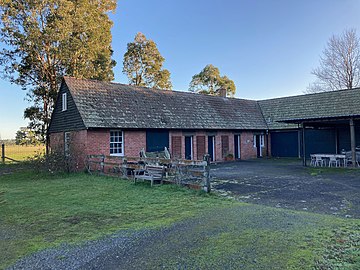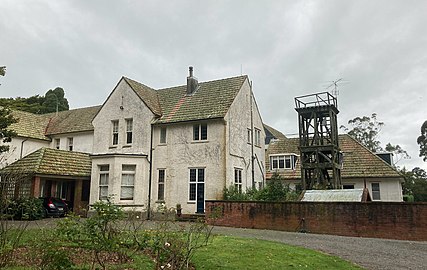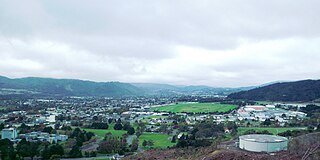
Upper Hutt is a city in the Wellington Region of New Zealand and one of the four cities that constitute the Wellington metropolitan area.

Richard Barton was the first European resident of Trentham, Upper Hutt, in New Zealand. He was born in Newport, Isle of Wight, England.

Featherston is a town in the South Wairarapa District, in the Wellington Region of New Zealand's North Island. It is at the eastern foothills of Remutaka Range close to the northern shore of Lake Wairarapa, 63 km (39 mi) north-east of central Wellington and 37 km (23 mi) south-west of Masterton.

The Remutaka Tunnel is a railway tunnel through New Zealand's Remutaka Range, between Maymorn, near Upper Hutt, and Featherston, on the Wairarapa Line.

The Wairarapa Line is a secondary railway line in the south-east of the North Island of New Zealand. The line runs for 172 kilometres (107 mi), connects the capital city Wellington with the Palmerston North - Gisborne Line at Woodville, via Lower Hutt, Upper Hutt and Masterton.
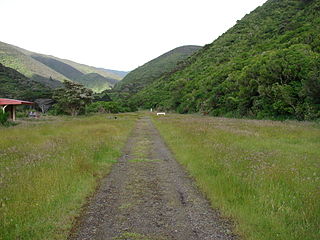
Cross Creek railway station was the base of operations for the Rimutaka Incline, a Fell railway over the Remutaka Ranges, and part of the original Wairarapa Line between Upper Hutt and Featherston in the Wellington region of New Zealand's North Island. The station was between Pigeon Bush and Summit stations on the Wairarapa Line. The station was bypassed when the Rimutaka Tunnel was opened.

Daniel Johnston Riddiford was a New Zealand politician of the National Party.
Wairarapa South was a New Zealand parliamentary electorate from 1881 to 1887.
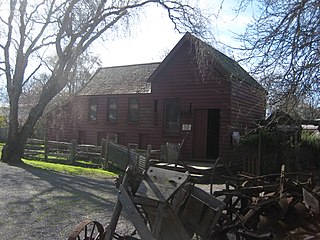
Cobblestones Museum is a regional early settlers museum in Greytown, New Zealand. The museum is located at site of the original Cobb and Co coaching stables. The museum contains several buildings recognised as historic by the New Zealand Historic Places Trust, these include:
Henry Bunny was a 19th-century Member of Parliament in the Wairarapa, New Zealand.
William Noel Pharazyn was a New Zealand soldier, businessman, journalist, lecturer and trade unionist.
Edward Joshua "King" Riddiford was a New Zealand runholder. He was born in Hutt Valley, Wellington, New Zealand in 1842.

Charles Johnson Pharazyn was a runholder, merchant, and member of the New Zealand Legislative Council who lived beyond 100 years of age. His obituary in the Wellington newspaper described him as a man of much wealth.

Lambton originally Wellington railway station in Featherston Street, Wellington, New Zealand was the southern passenger terminus for the Hutt Line and the Wairarapa Line from 1885 to 1936 and for lines further north until December 1908. Wellington's third railway station it had been preceded by station buildings temporarily at Pipitea Point and a site further south on Featherston Street beside Wellington's rail freight depot and its Railway Wharf.

Fernside is a generous and luxurious five-bedroom white-weatherboard slate-roofed American Colonial Revival style house with an L-shape plan. It covers approximately 9,000 square feet or less than 1,000 square metres. There are three further bedrooms in the staff wing of the main house. Set by the Tauherenikau River on the plain below the junction of the Tararua and Rimutaka ranges Fernside was built in 1924 to replace a house destroyed by fire.

Ella Grace Elgar was a New Zealand socialite and art collector.
Charles Chapman Elgar was a wealthy New Zealand entrepreneur and the husband of wealthy socialite Ella Elgar (1869–1945).

Featherston Military Camp, on a "windswept grassy plain" 3 kilometres north of Featherston, New Zealand was built —after the announcement of National Registration of all military-aged men— to supplement Trentham Military Camp on the other side of the Rimutaka hill. The National Registration actually took place in October and November 1915 but the bill empowering conscription by the government did not pass until 1 August 1916.

The Carkeek Observatory is the earliest surviving astronomical observatory in New Zealand. It was built around 1867 by retired customs officer and amateur astronomer Stephen Carkeek on his farm south of Featherston in the Wairarapa. The timber building was in two parts: an octagonal room with a rotating canvas dome, and a rectangular annex. Carkeek died in 1878 and the disused observatory became a farm equipment shed. As late as the 1980s it was still largely intact, but is now a partial ruin, although the annex and parts of the rotation mechanism can still be seen in place. It was added as a Category I historic place in the New Zealand Heritage List on 26 June 2020.

Stephen James Carkeek was a New Zealand civil servant, the colony's first Inspector of Customs, and the builder of the oldest-surviving observatory in the country.






